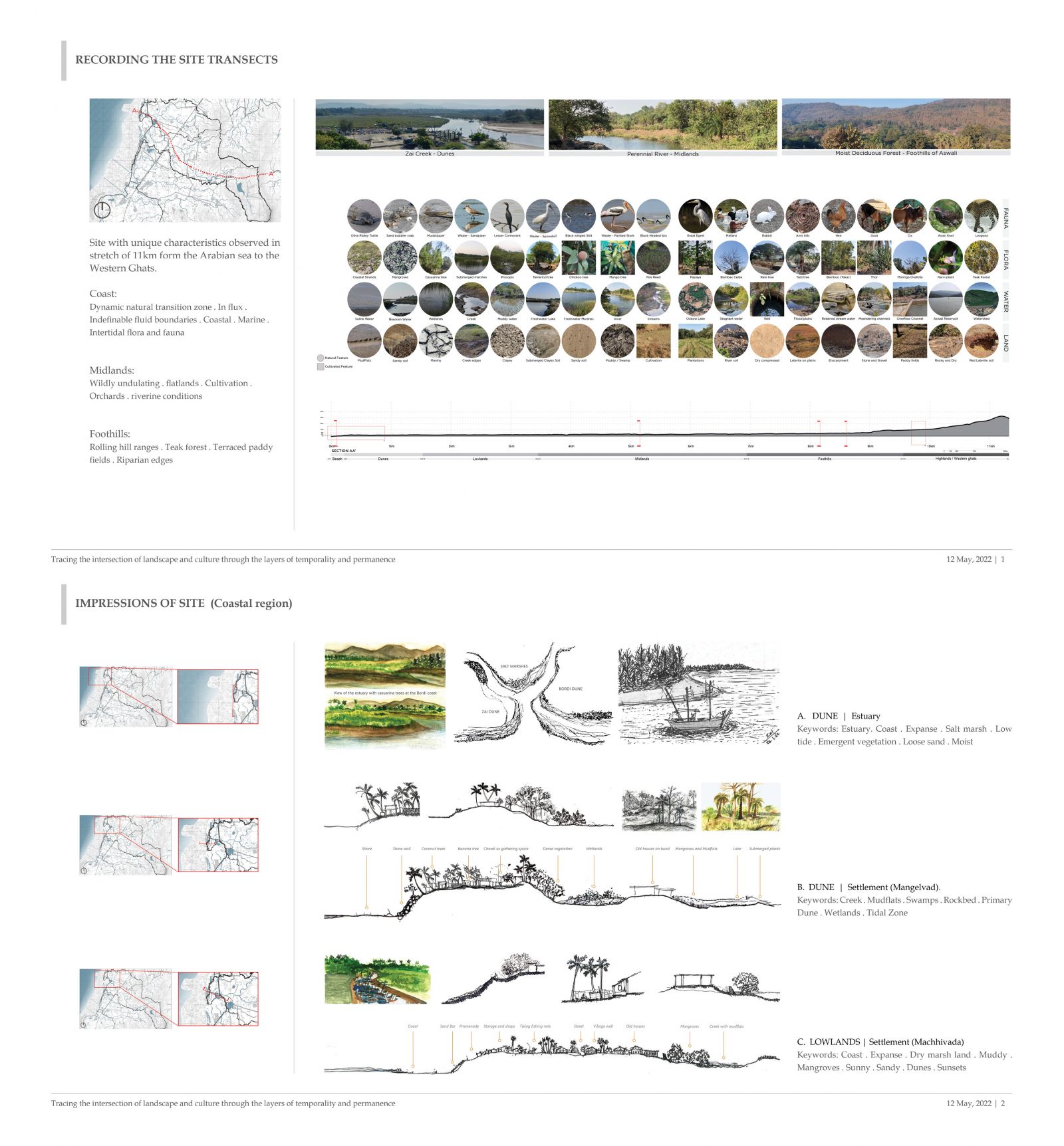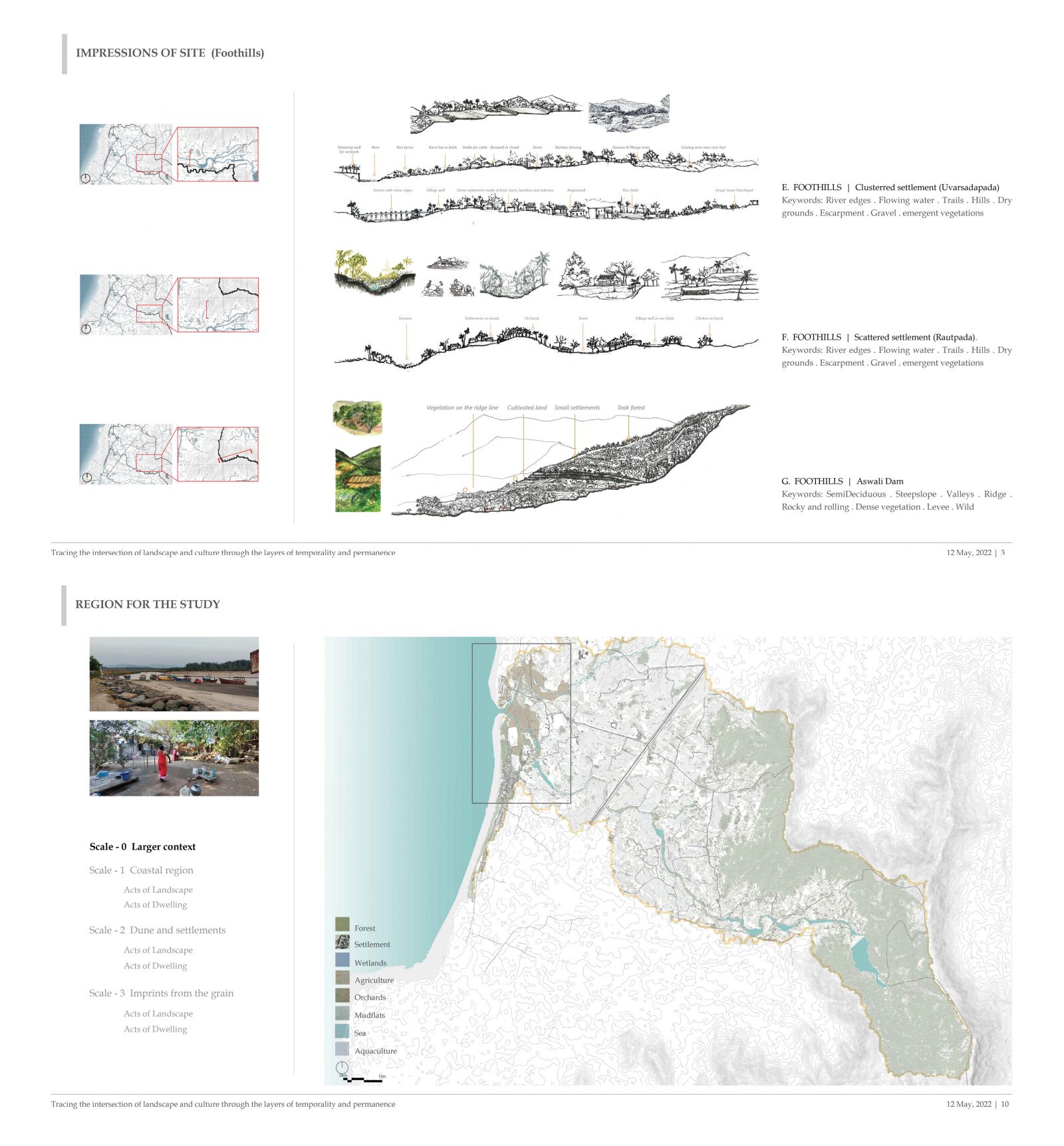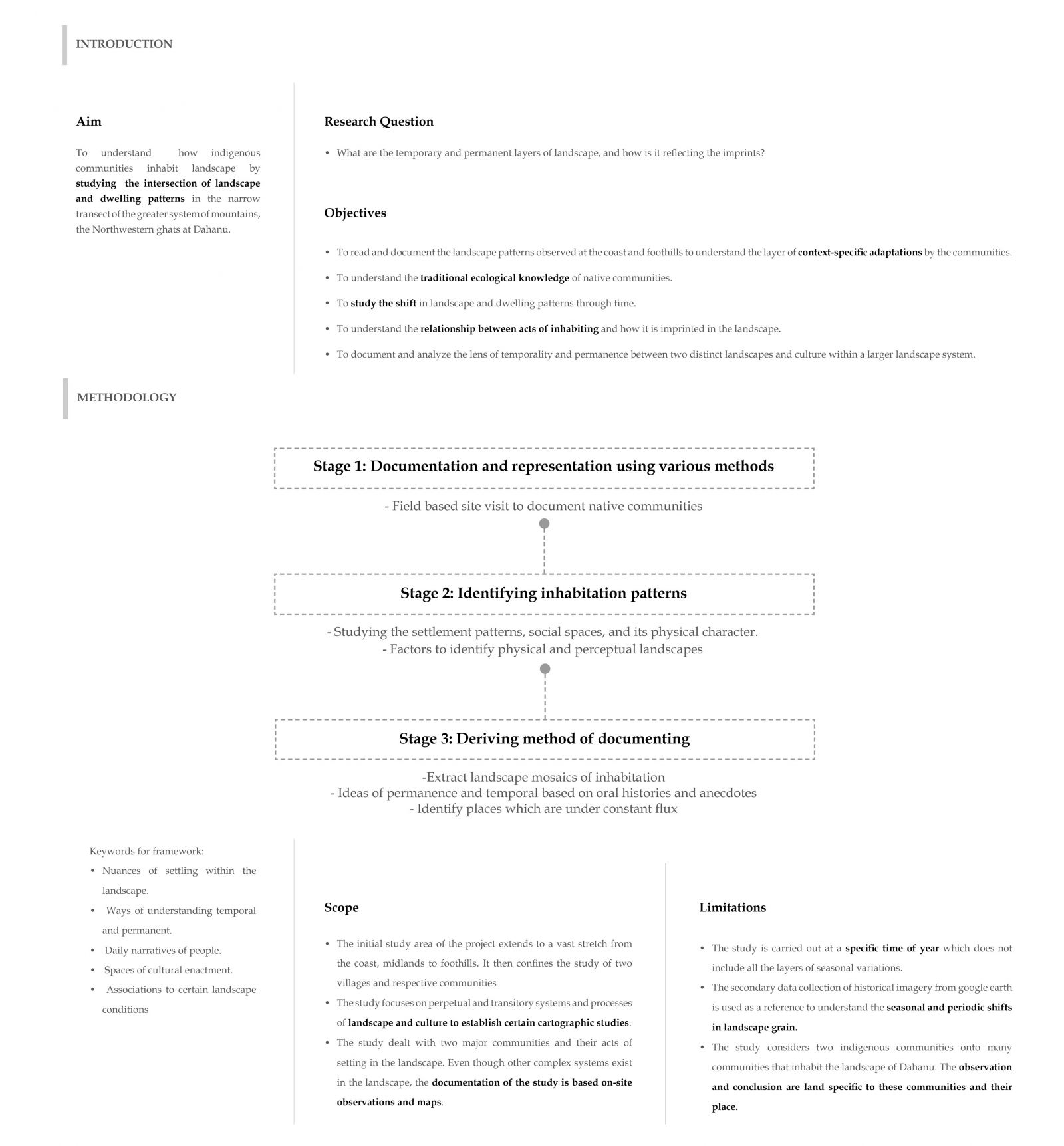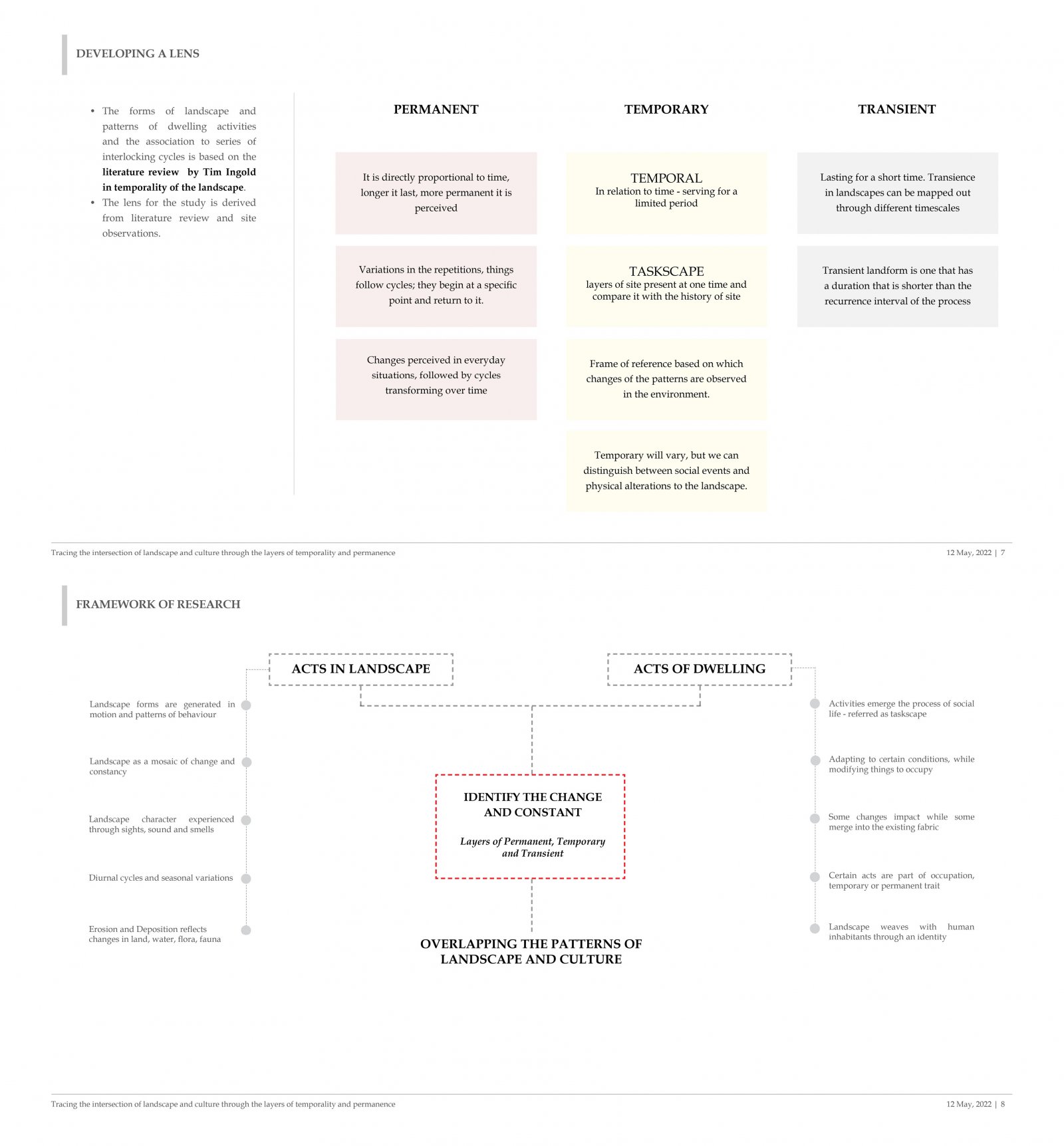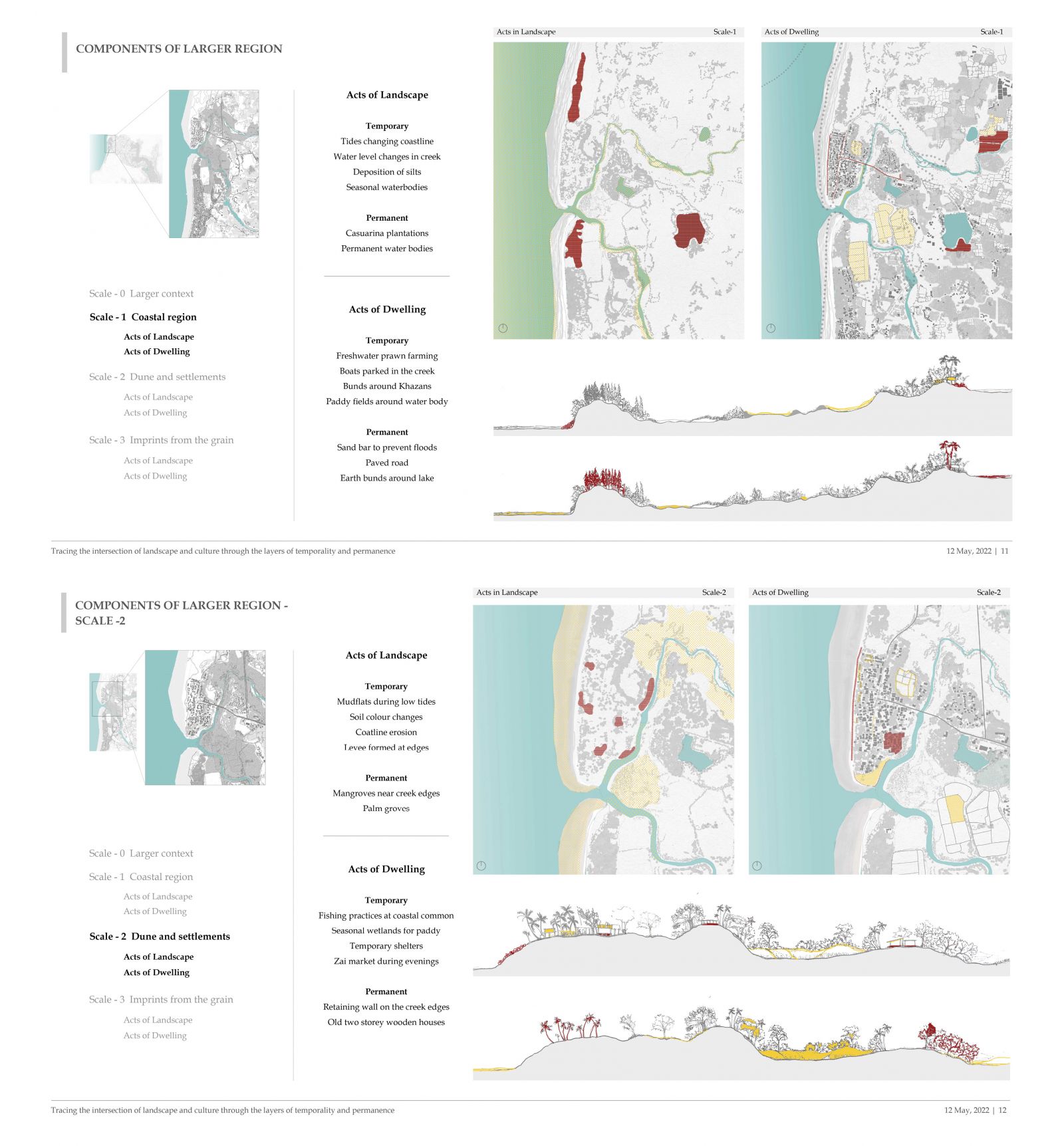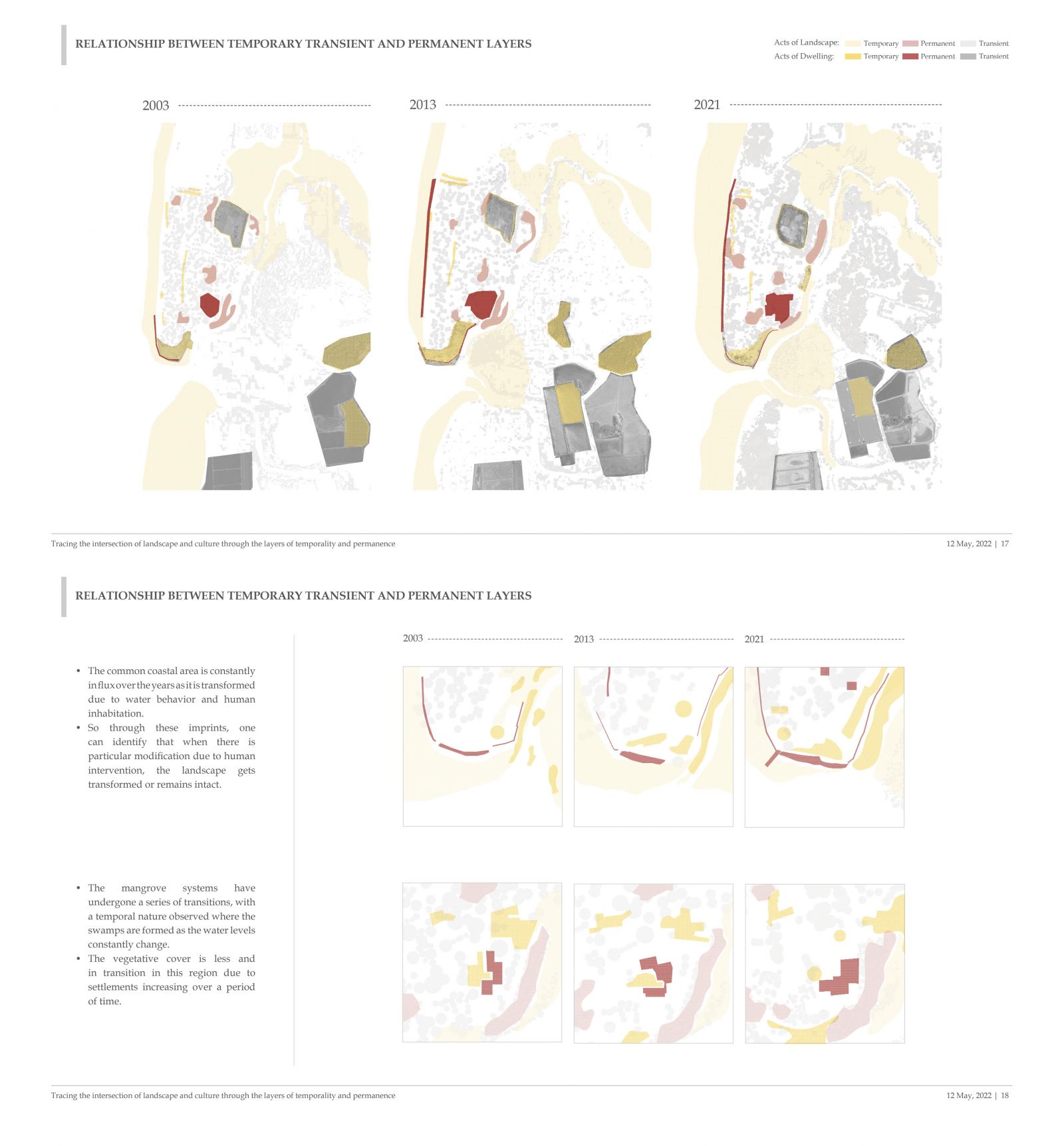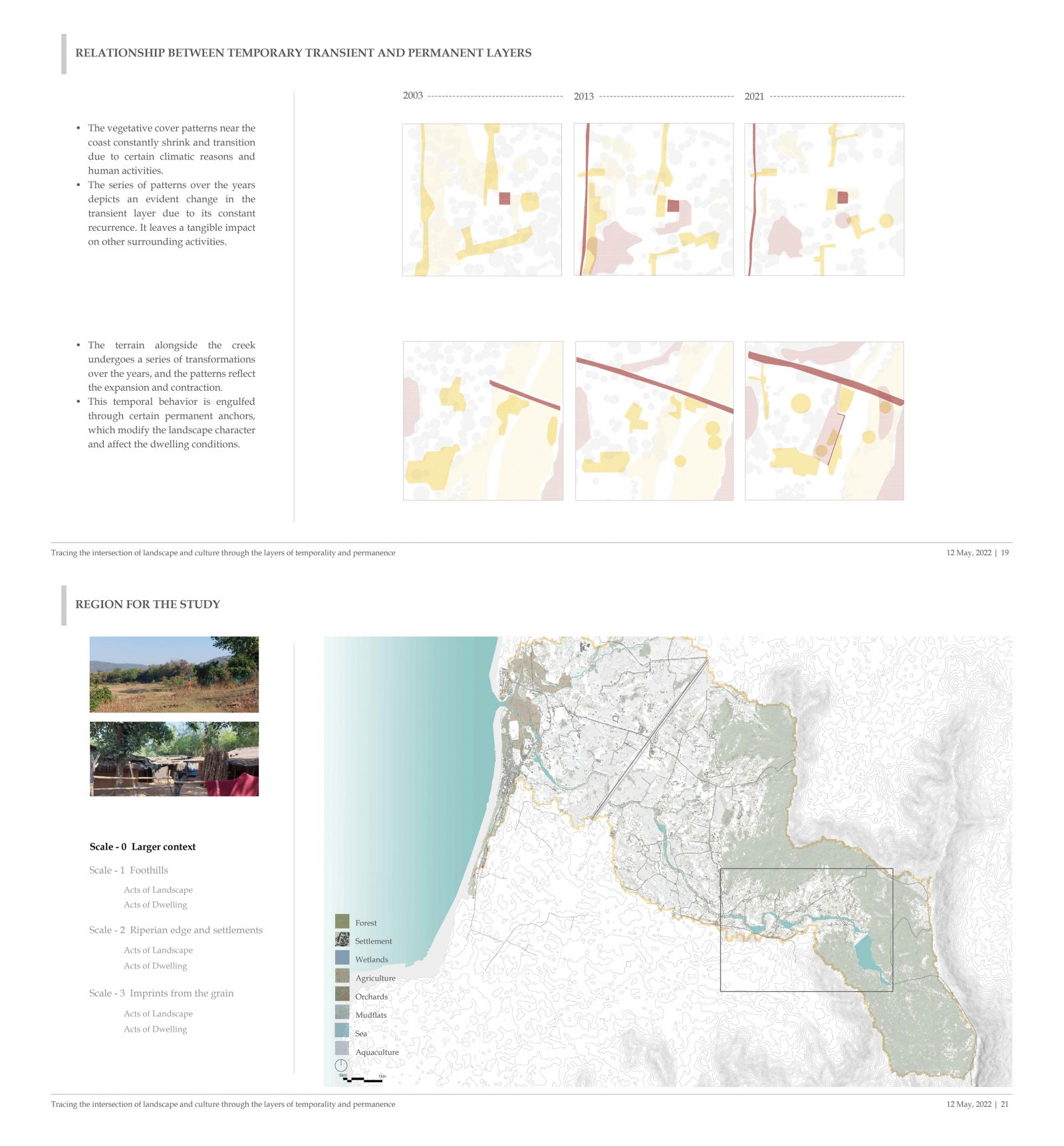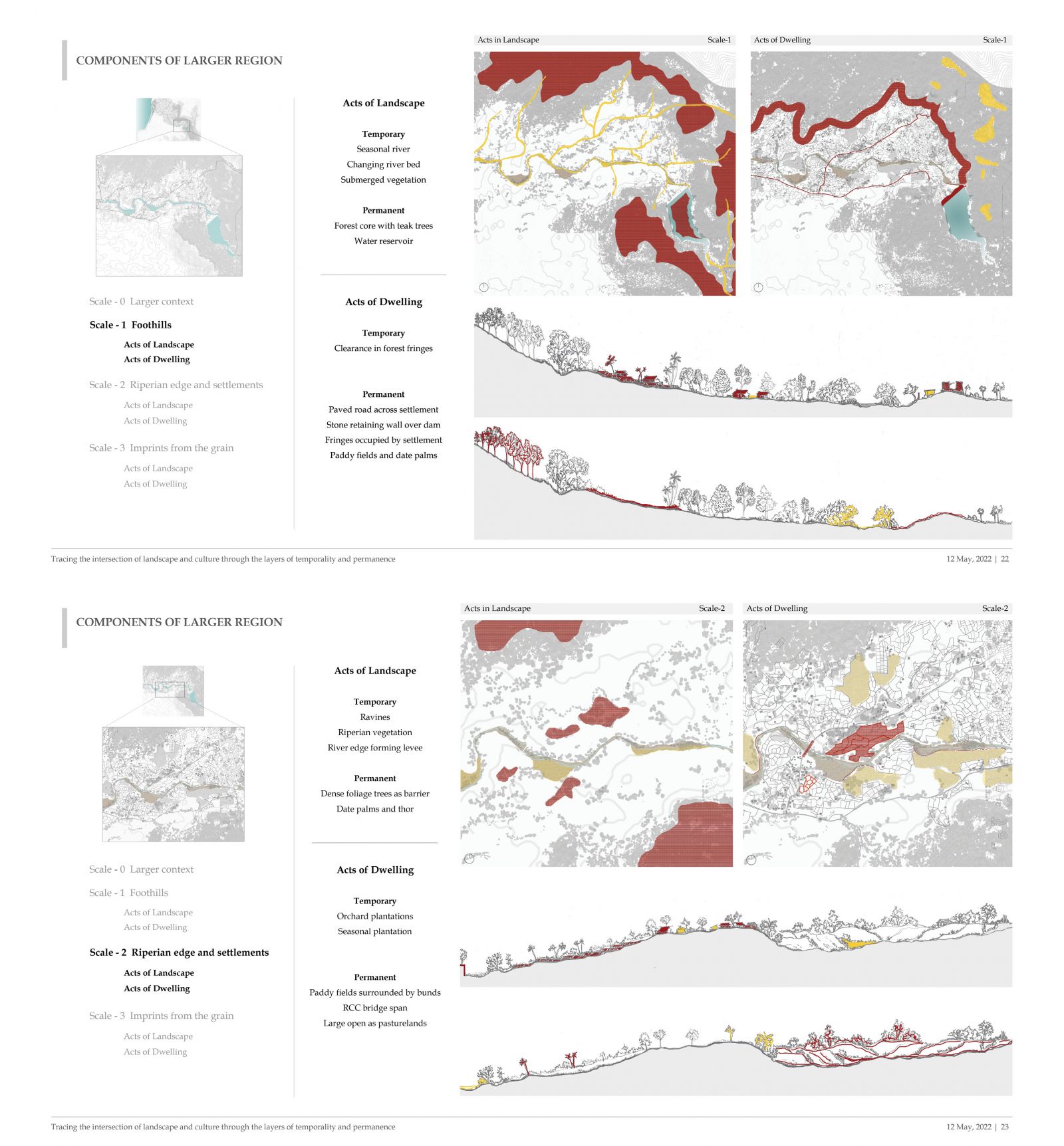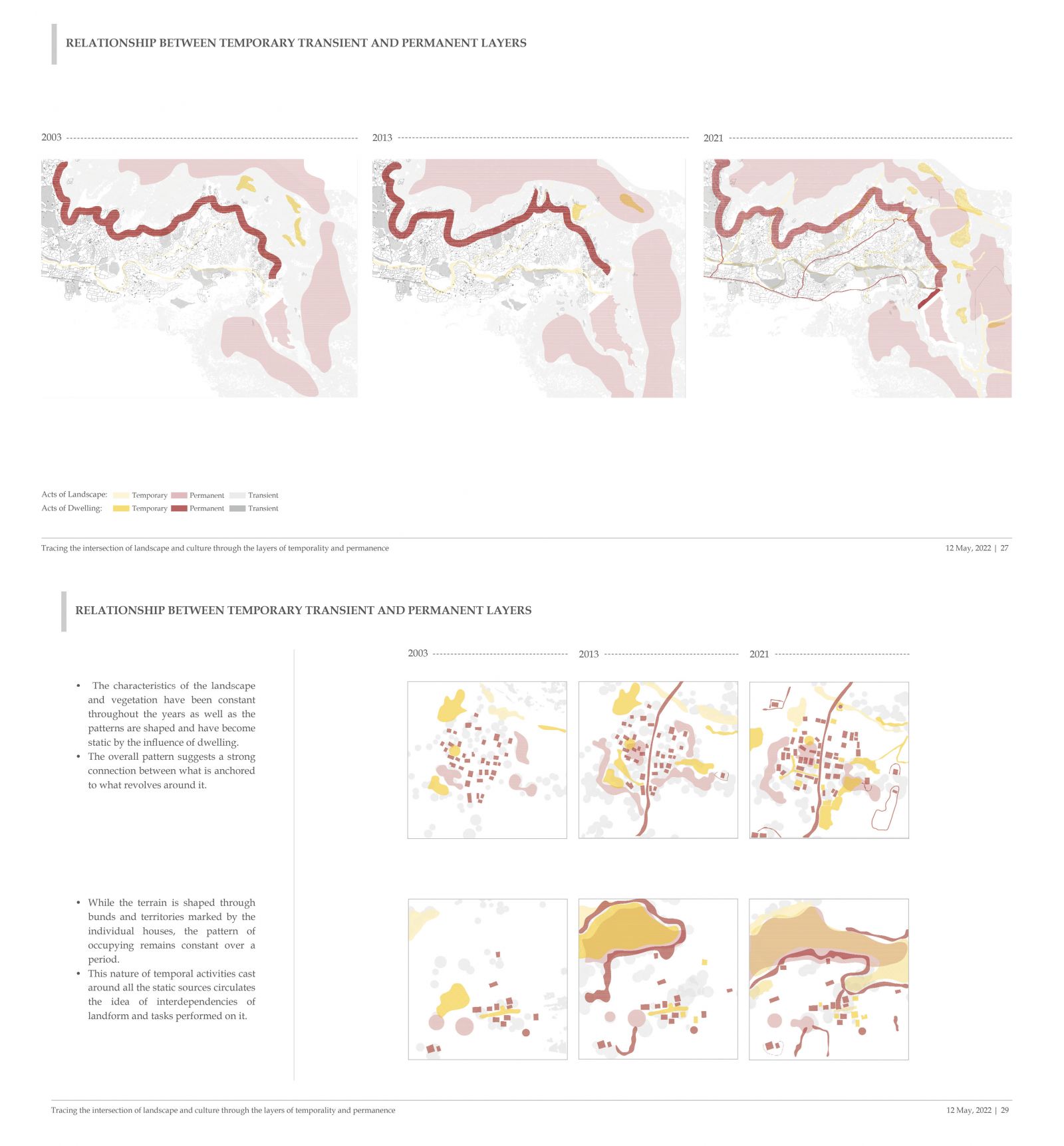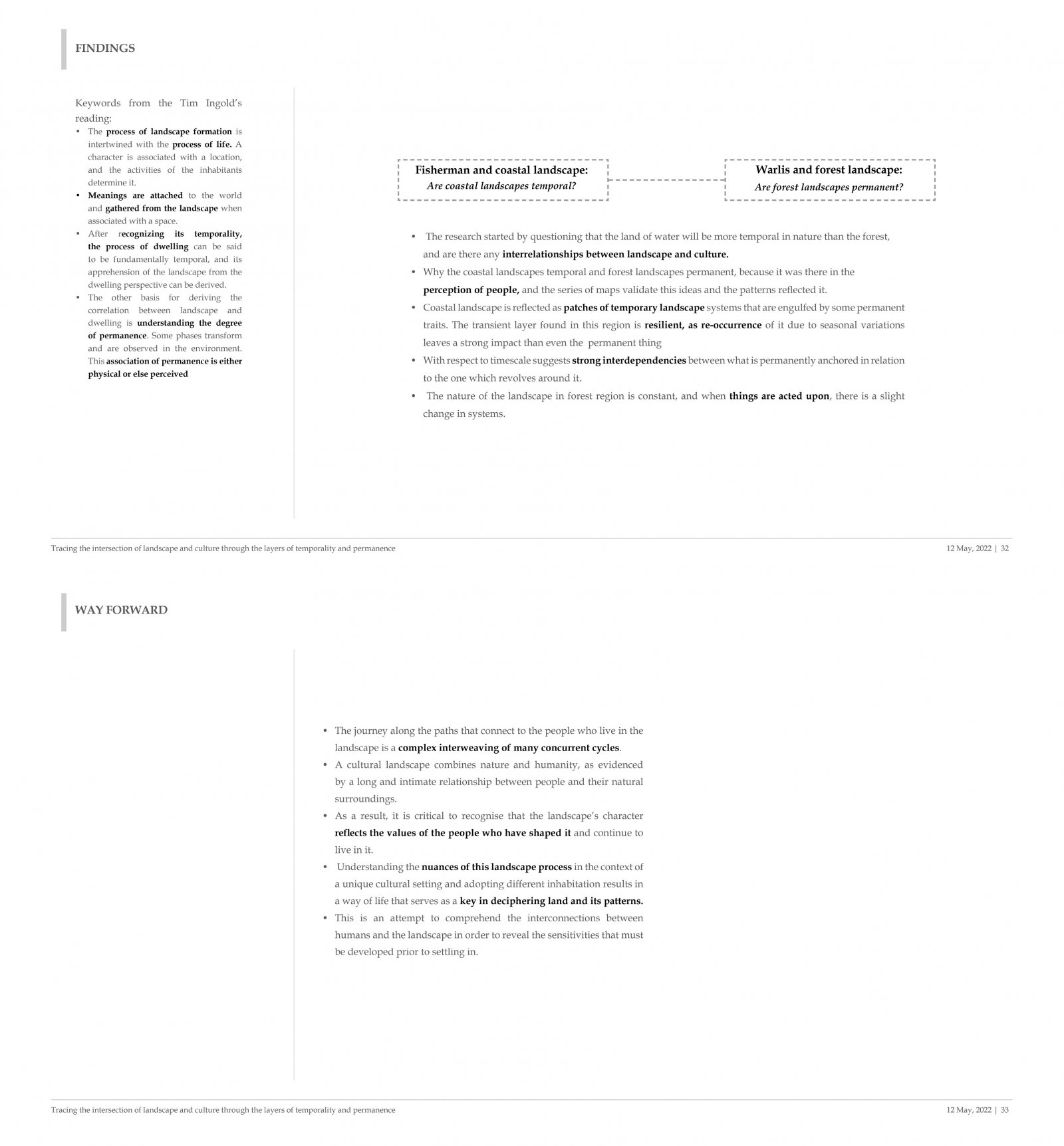Your browser is out-of-date!
For a richer surfing experience on our website, please update your browser. Update my browser now!
For a richer surfing experience on our website, please update your browser. Update my browser now!
The process of landscape formation is intertwined with the process of life. A character is associated with a location, and the activities of the inhabitants determine it. Each place has its significance related to the context of people’s engagement. Meanings are attached to the world and gathered from the landscape when associated with a space. Objects in the landscape are said to be clues to meanings, and the perspective of dwelling is derived from them. After recognizing its temporality, the process of dwelling can be said to be fundamentally temporal, and its apprehension of the landscape from the dwelling perspective can be derived. Change is an inherent experience of landscape. The landscape is composed of unpredictable processes or measures, such as drift and tectonic plate collisions in relation to the human span; these systems last for a short time, giving the impression of transience on stable forms. The other basis for deriving the correlation between landscape and dwelling is understanding the degree of permanence. Some phases transform and are observed in the environment. This association of permanence is either physical or else perceived. The research started by questioning that the land of water will be more temporal in nature than the forest, and there are interrelationships between landscape and culture.
